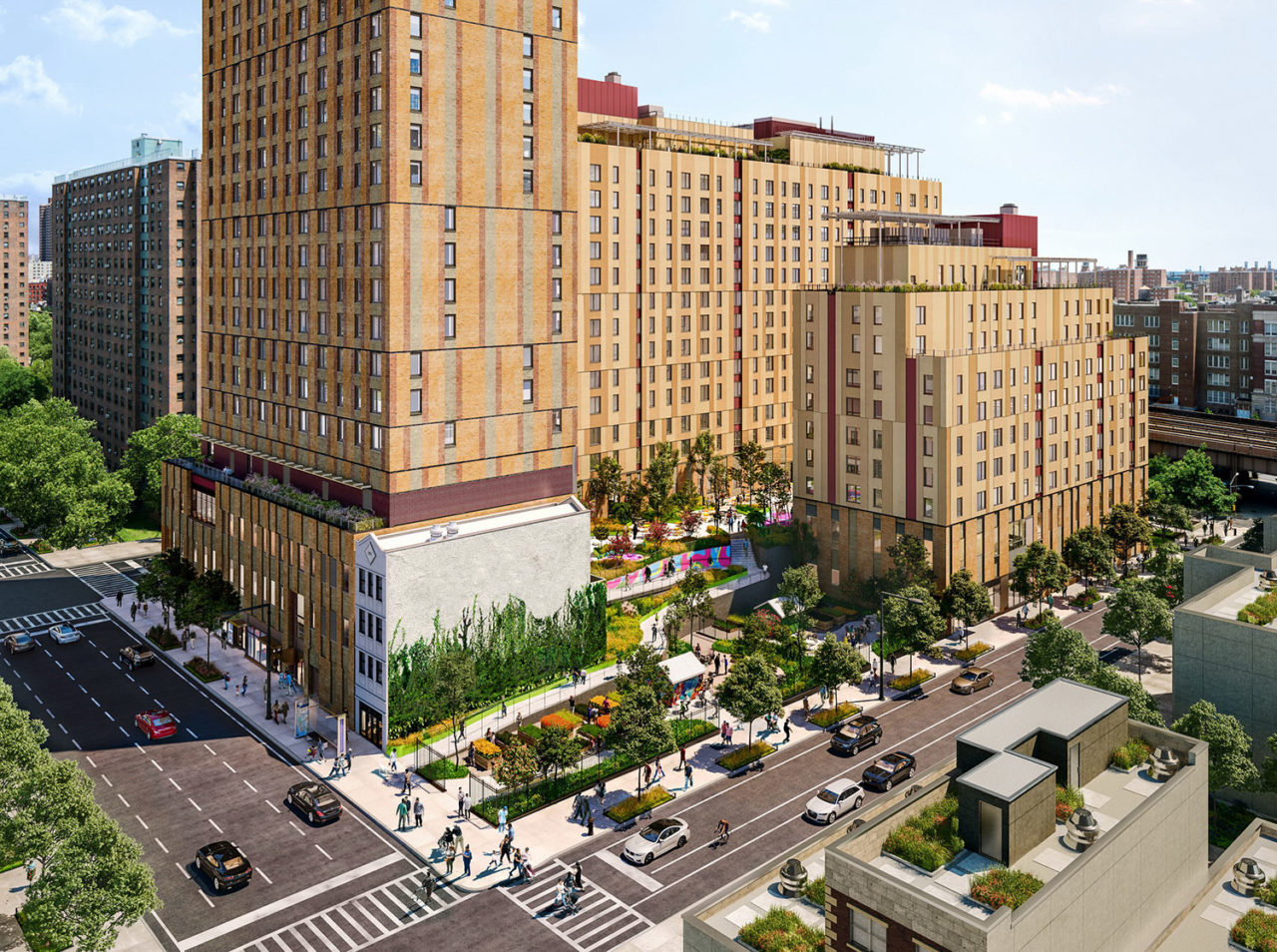by: AIA New York and NYSERDA
The Buildings of Excellence competition, administered by The New York State Energy and Research Development Authority (NYSERDA), is accepting proposals through May 27. Launched in March 2019, the $40 million competition recognizes and rewards the design, construction, and operation of very low- or zero-carbon emitting multifamily buildings.
While the competition’s first round awarded $18 million to 28 statewide projects in four categories (Early Design, Late Design, Under Construction, or Post-Completion Performance Optimization), the second-round call awards in two categories only: Early or Late Design. Winning projects in the Early Design stage will receive up to $1 million in funding, while projects recognized in Late Design will receive up to $750,000.
Eligible projects must meet low- to zero-carbon energy performance criteria and be aesthetically pleasing, resilient, easily replicable, profitable, and comfortable for occupants. High-quality constructibility and a strong connection to the community are also important qualifiers. For full details, see the call for entries here.
Round-one winners, including 18 projects located in New York City, were announced during an award ceremony at the Building Energy Exchange in late 2019. Together they exemplify the design, construction, and operation of highly replicable and adoptable low-carbon emitting multifamily buildings.
Among them, Brooklyn’s HELP ONE homeless shelter falls in the Early Design category. Designed by Curtis + Ginsberg Architects, the purpose-built shelter will feature 195 family units, each with a dedicated bathroom and kitchen and accessory uses. HELP ONE is designed with VRFs, Energy Star appliances, water conserving plumbing fixtures, thick insulation, and LED lighting to provide greater comfort and improved air quality for residents and lower annual operating costs.
In the Late Design category, Sendero Verde Building A (SV-A) in East Harlem, designed by Handel Architects, won as a transformative affordable-housing and mixed-use development. In an effort to drastically cut the carbon emissions of the building, the project is seeking Passive House certification. Residents will not only realize energy cost savings, but will also be living in a building with enhanced indoor-air quality, comfort, and resiliency. The SV-A project team is employing both financing and design strategies to ensure the project is both cost-effective and replicable for future development.
In the Under Construction winners category, Tree of Life in Jamaica, Queens is a 12-story affordable, mixed income, mixed-use residential and community facility building designed by GF55 Architects and developed by The Bluestone Organization (Bluestone). Tree of Life will include 174 affordable rental units, as well as 9,600 gross square feet owned and operated by the First Jamaica Community and Urban Development Corporation, a not-for-profit organization providing community service programs in Jamaica, and 15,400 square feet to be leased and operated as a healthcare facility to a not-for-profit operator. See all 28 round-one winners here.
Each awarded project has successfully demonstrated how it will achieve low-carbon performance, can be widely adopted, offers financial benefits for owners, and provides a comfortable, healthy and safe living environment for occupants. Additionally, the projects are tasked with capturing actual data associated with the design, construction, performance and cost attributes that can be leveraged to increase the number of low- to zero-carbon buildings in New York State.










